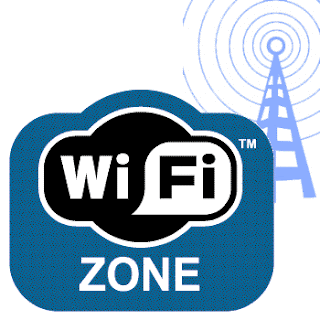February 22, 2011
Wi-Fi Hot Spots: 6 Ways To Use public Wi-Fi hot spots safely
Do you like this story?
Places like Starbucks, neighborhood cafes, Airports, and universities are all jumping on the "free Wi-Fi" bandwagon--hey, it's trendy. As a result, more of us are connecting to these networks without realizing the security risks.
But did you read the fine print? Wi-Fi hot spots are unsecured networks that hackers like to take advantage of. Everything--including your data, account information and passwords, Google searches, and finances--can become available to the hacker who wants it badly enough.
So before you pay your bills or write your genius business plan at the local cafe, get to know these six useful practices:
1. Be aware that you're never secure.
Wi-Fi hot spots are always unsecured connections, so you and potential hackers are hanging out in the same network bubble. It's not difficult for one to tap into your activity and sniff out your personal information. So, even if a hot spot requires a password or guides you through a log-in screen, you're still at risk.
2. Harness built-in security tools.
Mac OS X and Windows have built-in security features that you should take advantage of. Enable your firewall (through security settings) and check off "Block all incoming traffic." This setting will keep most of the bad guys out. Disabling file sharing (shown in the video above) is also an important security measure.
3. Protect your passwords.
Hackers can retrieve saved passwords from your Registry or install keyloggers, which make your keyboard activity available to them (including passwords you type in). Install something like LastPass, a browser add-on that stores your passwords in the cloud--you'll never have to type a thing and passwords won't be saved on your computer.
4. Look for the padlock.
Web sites that use HTTPS encrypt your activity, so anything you do on that site is confidential. Look for a padlock in the address bar, or simply check the URL for "https://..." Not all Web sites do this, but you can download HTTPS Everywhere, an add-on that will force an encrypted connection on many popular sites.
5. Check the network name.
In an attempt to lure you in, hackers might set up fake networks like "FREE Public Wi-Fi", or "Starbucks FREE." Check with the venue's employees to confirm the name of their network.
6. Use common sense.
You should treat all open networks as a security risk. Don't do any banking, online shopping, or other activities that would expose your private information. If you wouldn't be willing to share it with the public, it can wait until you get home.
Do you have best practices for using Wi-Fi hot spots? Share with us in the comments below!
But did you read the fine print? Wi-Fi hot spots are unsecured networks that hackers like to take advantage of. Everything--including your data, account information and passwords, Google searches, and finances--can become available to the hacker who wants it badly enough.
So before you pay your bills or write your genius business plan at the local cafe, get to know these six useful practices:
1. Be aware that you're never secure.
Wi-Fi hot spots are always unsecured connections, so you and potential hackers are hanging out in the same network bubble. It's not difficult for one to tap into your activity and sniff out your personal information. So, even if a hot spot requires a password or guides you through a log-in screen, you're still at risk.
2. Harness built-in security tools.
Mac OS X and Windows have built-in security features that you should take advantage of. Enable your firewall (through security settings) and check off "Block all incoming traffic." This setting will keep most of the bad guys out. Disabling file sharing (shown in the video above) is also an important security measure.
3. Protect your passwords.
Hackers can retrieve saved passwords from your Registry or install keyloggers, which make your keyboard activity available to them (including passwords you type in). Install something like LastPass, a browser add-on that stores your passwords in the cloud--you'll never have to type a thing and passwords won't be saved on your computer.
4. Look for the padlock.
Web sites that use HTTPS encrypt your activity, so anything you do on that site is confidential. Look for a padlock in the address bar, or simply check the URL for "https://..." Not all Web sites do this, but you can download HTTPS Everywhere, an add-on that will force an encrypted connection on many popular sites.
5. Check the network name.
In an attempt to lure you in, hackers might set up fake networks like "FREE Public Wi-Fi", or "Starbucks FREE." Check with the venue's employees to confirm the name of their network.
6. Use common sense.
You should treat all open networks as a security risk. Don't do any banking, online shopping, or other activities that would expose your private information. If you wouldn't be willing to share it with the public, it can wait until you get home.
Do you have best practices for using Wi-Fi hot spots? Share with us in the comments below!
 About the Author:
Ifeanyi Emeka is the founder of this blog and also writes for Tech Forked. He is passionate about tech stuffs and loves customizing blogger themes.
About the Author:
Ifeanyi Emeka is the founder of this blog and also writes for Tech Forked. He is passionate about tech stuffs and loves customizing blogger themes.Popular This Week
Wi-Fi Hot Spots: 6 Ways To Use public Wi-Fi hot spots safely
2011-02-22T15:24:00Z
dfgdfg
wep-cracking|Wi-Fi|wifi-cracking|wifi-hacking|
Subscribe to:
Post Comments (Atom)


